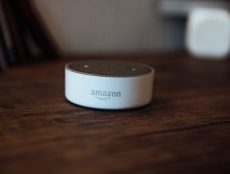
Articles
Top 10
Overcoming The Perceived Barriers of Digital Learning
By Allison Hess
February 05, 2017
In a society where 62% of Americans get their news from social media and the President tweets his political opinions, children are engaged more than ever with digital methods of gaining knowledge. It seems natural to incorporate digital learning in the classroom as a necessary skill and an augmentation to educational tools.
A 2013 survey by PBS found that 69% of educators surveyed believed technology propels student education quicker than before. 74% of those educators believed technology is vital to expand on classroom content and is an effective motivational tool for children. 73% said digital resources enable teachers to better respond to different learning styles of children within the same class; this would enable more success in the same amount of time.
The U.S. Department of Education firmly believes that technology, especially blended learning, “ushers in fundamental structural changes that can be integral to achieving significant improvements in productivity.”
Despite all the potential good of a digital classroom supplement, technology may not be producing this desired improvement in productivity. Teachers and administrators hit significant roadblocks that are disabling them from using digital resources as a means of connecting students to learning.
Standardized Testing
The biggest issue seems to stem from standardized testing. Teachers feel that administration policies do not promote digital reading, as standardized tests do not measure digital skills. While these tests are often administered on computers, they do not measure skills in search engines, understanding online data, and more.
If teachers are forced to teach towards standardized tests (which is a problem in it of itself), promoting digital skills feels to be a waste of precious time in the classroom. Harvard Politics’ Quinn Mulholland wrote in The Case Against Standardized Testing: “This increased focus on test prep has had a profoundly negative impact on the quality of education many students receive.” This limits their ability to learn digital skills necessary in our modern-day era.
Digital Natives
Many teachers and educators wrongly believe that students are already proficient in technology. They’ve grown up with phones and tablets in their hands, so why spend time on it in school? However, research suggests that students struggle with comprehending and utilizing digital content just as much as previous generations of students.
In fact, recent findings show that students often use online information without knowing how to determine credibility or highlight important facts and statistics. While many students may be able to type a search keyword into Google, most do not understand how to use the results as an appropriate learning tool.
Educators’ Deficiency
Educators are, for the most part, not taught on digital platforms, so they are not personally familiar with it. Similarly, they are not trained on how to teach digital courses to their students. Bass, the innovation coordinator in Chesterfield, told EdWeek, “We fall back and rely on the way we were taught, and that’s a barrier.”
Common Sense Media has come out with a lesson plan that helps teachers to navigate cyberbullying, privacy, safety, self-image, information literacy, relationships, and communication. The goal of such curriculums is to help students navigate the internet safely; it also teaches how to use safe practices to collaborate with new, advanced methods of teaching.
But, administrations and higher-education schools seem unwilling to invest in teaching educators these digital-rich programs. Thus, a lack of professional development of teachers, in turn, creates a skill gap in students. Although this skill gap is unmeasured, it will begin to raise more issues as the world becomes even more digital.
Distraction and Procrastination
Of course, another major concern is distractive behavior. Students can easily flip to thousands of sites when their teachers aren’t looking or when they don’t feel like doing their homework.
However, distractions always happen. It’s a part of life that we all deal with every day. Digital learning is an ideal platform to teaching skills to overcoming distraction and procrastination. Teachers are able to monitor their classrooms’ use of online learning; they can also encourage students to use the Internet to learn, rather than just play games.
Ultimately, the importance of introducing technology in the classroom overwhelms the perceived barriers. Learning should be about connecting children to the world around them—past, present, and future. Technology enables exploration and curiosity while augmenting traditional learning platforms in ways that have never before been accessible. The solution? A nationwide acceptance of and push towards blended education of classroom eLearning.









No Comments